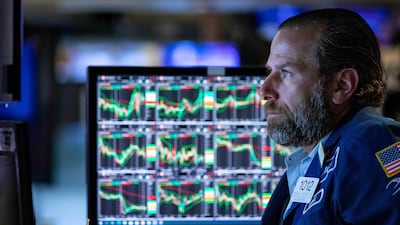Here we go again. “Demographic experts” complain that low developed world birth rates will cause labour shortages, hurt businesses and tank economic demand, all while “zombie-like” old folks suck resources dry.
Their simple-minded conclusion: “bad” demographics will hurt the global economy and stock markets.
But these fears are old – and wholly backward. Older populations aren’t impediments to progress – they are signs of it. Here is how to see through daffy demogra-fictions.
Yes, the western world is ageing. Start with America.
According to the Organisation for Economic Co-operation and Development (OECD), 9.8 per cent of US residents were aged 65 or older in 1970. That has nearly doubled to 17.3 per cent. Supposedly bad.
In 2000, America’s “old age dependency ratio” – OADR, how many people aged 65 and above for every 100 working-age folks – was 20.9. It has since spiked to 30.4. Also, supposedly bad.
By 2050, the OECD projects it to reach 40.4 – and 55.4 in the EU. Supposedly awful! That means only about two workers would “support” every person over the age of 65.
By 2080, the US Census Bureau projects America’s population will peak and start easing lower. Supposedly terrible!
What to do? Celebrate!
Every major economy gets relatively older as it prospers. As living standards increase, lifespans follow. Birth rates fall, too, alongside infant mortality.
American men born in 1900 had a life expectancy of 46.3. Women? 48.3.
By 1950, when I was born, they reached 65.6 and 71.1. Now? 73.5 and 79.3.
Tremendous healthcare advances mean those extra years are fruitful and productive.
Doomers conveniently ignore the crucial caveats of “good” demographics. Sadly, countries allegedly sporting the youngest populations (and, hence, lowest OADRs) – mostly in Africa – suffer poverty, shorter lifespans and higher infant mortality rates.
But demographics aren’t destiny. Innovation is. History shows most regions growing into major economies get relatively older – without killing economic growth and stock market gains.
In 1982, America’s OADR was 20. It has since thrived, not dived. Gross domestic product tripled.
Through to October, including dividends, the S&P 500 returned 11.5 per cent annualised in the US dollar since 1982’s start.
Yes, periodic recessions and bear markets came and went. They always do, everywhere. But growth continued. Stocks climbed as OADR rose.
It has been similar in the UK, Germany, France, Canada, Australia – you name it.
Fear peddlers like to blame pockets of slow European growth – like Italy and Spain – on demographics. This is what I call “demogra-fictions”.
Italy’s OADR is below Germany’s and near identical with the Netherlands’. Spain’s is much lower than both.
Like most lower OADR countries, both have higher average annual hours worked per capita than the others.
If older demographics didn’t torpedo Dutch and German growth over recent decades, why would they be hurting Italy and Spain? They aren’t.
Structural problems – like a dearth of technology and innovation and regulations stymying innovation – explain their lags.
Doomers think all oldsters are penny pinchers. Wrong.
Consider this: In 1984, Americans aged 25 to 34 spent 41 per cent more than those aged 65 to 74. Yet, the gap shrank to just 12 per cent by 2022.
Again, innovation-derived prosperity rules.
Longer lifespans and an increased retirement age mean oldsters earn more than before – and spend part of it.
Sure, those aged 45 to 54 – the US’s highest spending bracket – still outspend 65 to 74 year olds by about 50 per cent. But even that gap decreased from more than 80 per cent in 1984.
Old folks invest, funding capitalism’s growthy magic. They give money to kids and grandkids, who spend it.
“Dependent” burdens? Ha! Many work into their 70s or 80s. I am 73, with no retirement in sight.
Experience can make older workers more productive today, not less – especially with physically intense farming and manufacturing jobs giving way to today’s service and knowledge-orientated economies.
Demographic bears also erroneously extrapolate recent trends.
founder, executive chairman and co-chief investment officer, Fisher Investments
No one knows for sure if US and European birth rates will keep falling, or how many skilled workers immigration may bring.
Globally, how might new inventions spur new efficiencies, as they always do? Consider the microchip’s impact over recent decades, or the internet and mobile phones.
Stocks? They price factors impacting companies’ profitability three to 30 months or so out. Not further.
Demographic trends evolve glacially over decades, giving markets ample time to adapt to whatever far-future realities emerge.
Demographic doomers play Goldilocks but never find “just right” conditions.
“Too many” births stoke overpopulation moaning. “Too few” spur today’s slow growth jabbering.
None of it tells you one iota about where economies or stocks are headed long term.
But it says much about sentiment. Sour spirits lower expectations, teeing up the positive surprises that drive stocks up the legendary “wall of worry” bull markets love to climb.
So, stay bullish. Tune out the demographic drama.
Ken Fisher is the founder, executive chairman and co-chief investment officer of Fisher Investments, a global investment adviser with $200 billion of assets under management.



